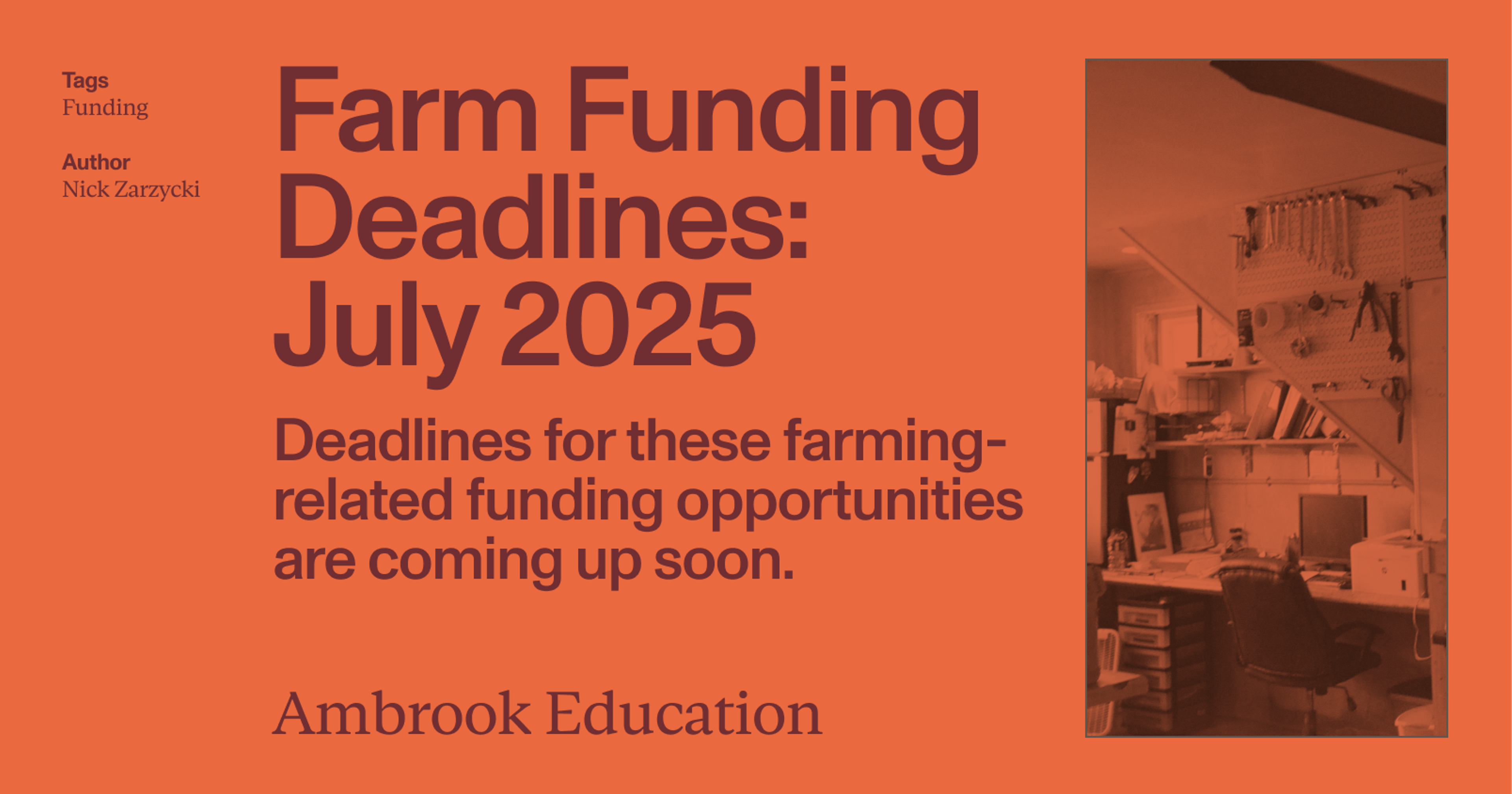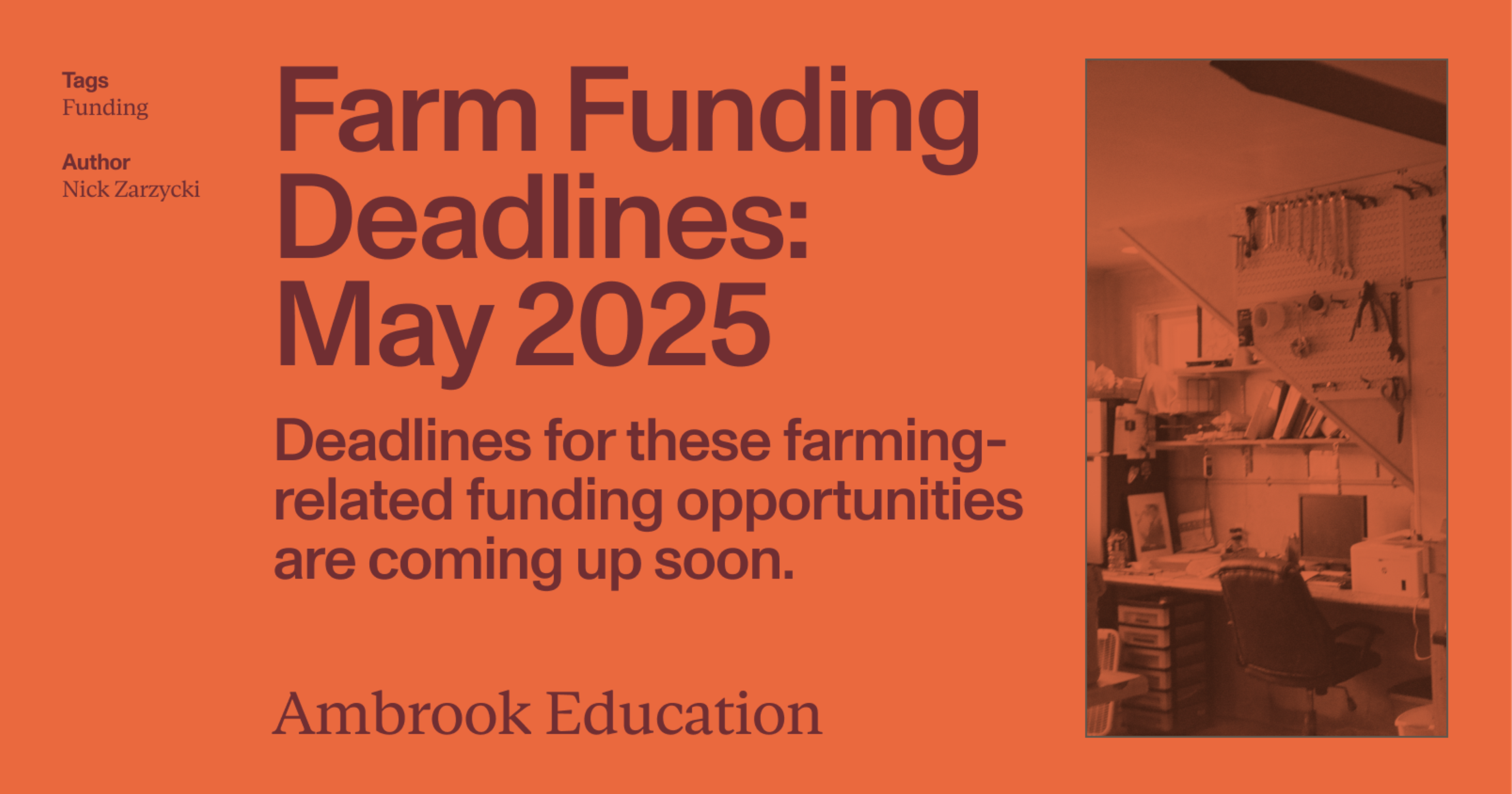A farm operating loan can be a powerful tool for managing seasonal cash flows, but finding the right lender and terms is crucial.
FSA, USDA and commercial operating loans can provide credit for a variety of purposes, including paying operating expenses, investing in livestock and machinery, land development, and in some cases even refinancing other debt.
But if you’ve never applied for one before, it isn’t always clear how an operating loan differs from other forms of farm financing (like land loans and emergency loans), whether it’s the right fit for your business, or whether you qualify. Here’s what you need to know.
What is a farm operating loan?
Operating loans are a type of debt that farmers use to pay for normal operating expenses like feed, seed, fertilizer and fuel, purchases of livestock and farm equipment, minor repairs and improvements to farm property, family living expenses, and in some rare cases refinancing other debt. When someone refers to a ‘farm operating loan,’ they’re usually referring to one of three different types of loan programs:
1. Farm Service Agency (FSA) Direct Loans
These are loans made directly to farmers by the FSA and are funded by Congressional appropriations. These are ideal for new farmers, farmers from socially disadvantaged groups, and those who may not qualify for credit from traditional or commercial lenders. These loans often feature lower interest rates and flexible terms, making them a good fit for individuals building credit or recovering from financial hardship.
2. USDA Guaranteed Loans
These are loans provided by commercial lenders and backed by the USDA, which guarantees a portion of the loan and reduces risk for the lender. They generally benefit farmers who can qualify for commercial credit but may need additional support to secure favorable terms.
3. Loans from commercial ag lenders and cooperatives
These are suitable for established farmers with solid credit histories who face fewer barriers to getting credit. These loans often offer a wider range of products and faster approval times, but generally come with stricter credit requirements and less flexible terms compared to government-backed options.
How much can I borrow?
With FSA Direct Loans the maximum loan amount is typically capped at $400,000, while USDA Guaranteed Loans offer up to $2.251 million (adjusted annually for inflation).
Private agricultural lenders and cooperatives do not have fixed borrowing caps and can offer loans well above the government limits, depending on the borrower’s creditworthiness, collateral, and business plan. These lenders often cater to medium and large-scale farming operations that require substantial and flexible financing.
What credit score do I need to get a loan?
Exact credit score thresholds will vary considerably by lender and your own financial situation. Generally speaking, FSA loans are designed to help farmers who may not qualify for traditional credit–so while a good credit history is helpful, a high credit score is not required; instead, applicants must demonstrate an ability to repay and manage debt responsibly.
USDA loans generally require stronger credit since lenders closely evaluate the borrower’s creditworthiness before offering terms. For private agricultural lenders and cooperatives, credit standards are even stricter. These lenders often expect a solid credit score as well as a proven track record of financial stability and repayment history.
What do I need to apply for a farm loan?
To apply, you’ll probably have to provide your lender with annual financial statements if you produce them, as well as federal and state tax returns, production records for prior years, and detailed cash flow projections.
If the farm operates through multiple business entities, financial statements and tax returns for each entity are required. Borrowers must also usually carry some kind of property, crop and liability insurance, as well as catastrophic risk protection for all significant crops and livestock.
How do I apply for a farm operating loan?
1. Assess your cash flow needs
While an operating loan might offer short-term cash flow and financial flexibility, you shouldn’t apply for one without having a clear idea of what you’ll need it for. Look at your cash flow budget for the year and take stock of any immediate or upcoming needs, and gauge whether you’ll have the funds to pay down the loan in the future.
2. Pick a lender
Find a lender that has experience dealing with seasonal agricultural operations–your local ag extension or FSA office can be a great resource and direct you to lenders that have experience working with family-run farms. Remember that some ag lenders offer seasonal draw structures that are ideal for agricultural operations, allowing you to borrow in one season and pay in another.
3. Gather the required documents
Most loan applications will ask you to submit a balance sheet, income statement, cash flow statement or cash flow budget for the business, as well as an operating plan for the year.
You might also be required to submit several years of tax returns and bank statements (especially if you don’t produce financial statements), information about your farm assets, and a credit score report. If you’re applying for a USDA or FSA-backed loan, you might be required to submit additional documents like a business plan and how you plan to use the loan proceeds.
4. Apply with your lender
Once you’ve got all your documents together, you’ll likely have to schedule a meeting with your lender to discuss the terms of your loan, including the loan amount, repayment terms, if and how the loan will be secured, and your interest rate.
Your lender will review your application and consider your business’ overall financial health, your credit-worthiness and ability to repay the loan, the adequacy of the collateral to secure the loan (if any), and your risk profile based on commodity prices, input costs and other market conditions.
This process can take a few weeks to complete, and if you meet all of the lender’s requirements, your loan will be approved.
After the loan is approved
Once your loan is approved, review the terms carefully and understand your interest rates, fees, payment schedules, and penalties. Set reminders for payments, track how funds are used and prepare for annual reviews.
Remember that many operating loans (especially FSA and USDA-backed ones) come with strict financial controls. Borrowers are usually required to specify in detail how loan funds will be used, with restrictions on personal compensation, family living expenses, and financial distributions, and all farm-related income and expenses must flow through designated bank accounts.
When considering new capital purchases, remember that your loan might come with capital asset and debt restrictions that prohibit capital expenditures or long-term leases without lender approval.
Ambrook lets your raise capital with confidence
With bookkeeping and accounting tools purpose-built for agriculture, Ambrook makes it easy to prepare for your next operating loan application and increase your chances of securing funding.
With features like automated financial reporting, simplified bookkeeping, and effortless bill pay and invoicing, Ambrook is more than just a farm tax and accounting tool: it takes the guesswork out of running your business. Interested in learning more? Start your 7 day free trial.
Want to learn more about Ambrook?






